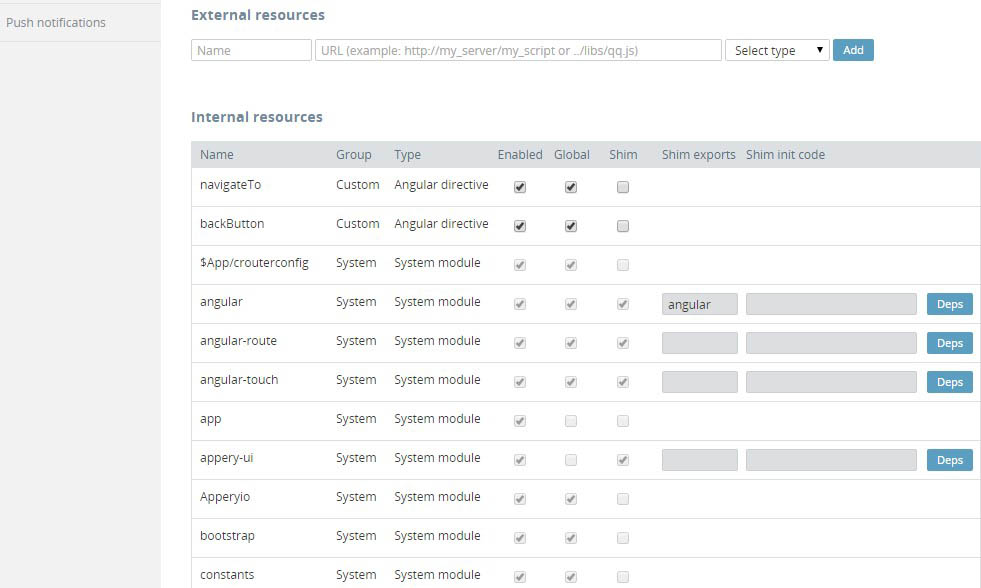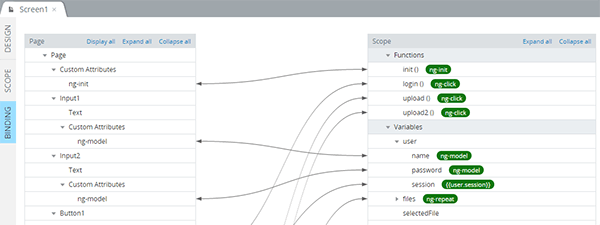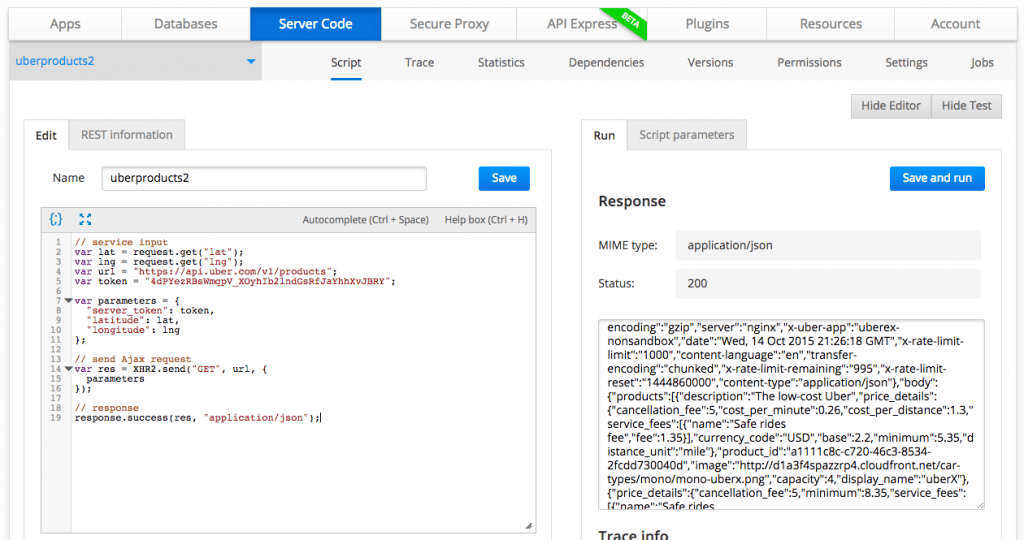Learn How to Schedule a Server Code Script to Run Periodically to Send a Push Notification
Appery.io Server Code enables mobile developers to write any custom app logic that is automatically exposed via a REST API. You develop the script using JavaScript (which is nice, since you don’t have to learn a new language). Server Code provides built-in APIs to make it easy to integrate with other Appery.io services. For example, you can query the Appery.io Database, send a push notification, and invoke any 3rd-party REST API service.
For example, let’s say you want to develop a script that will query a products database. If an inventory for a particular product falls below a set number, you want to send a push message to a manager notifying him or her that inventory is low.




